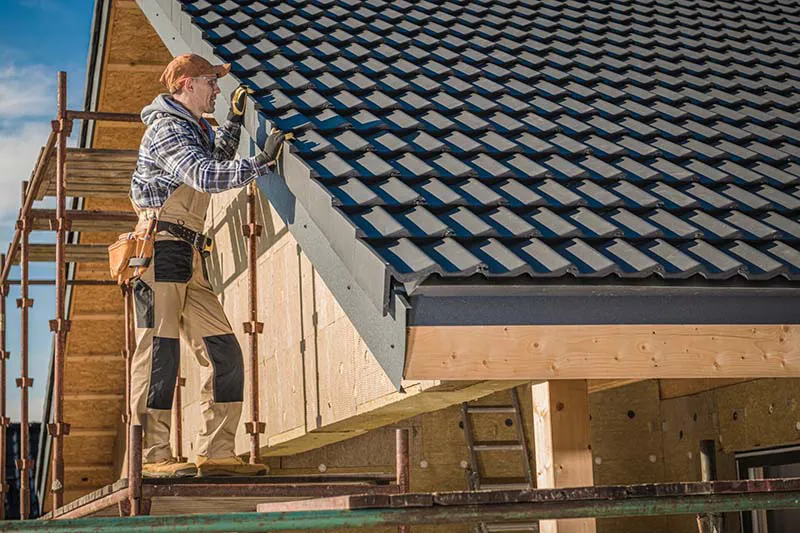Roof pitch is a critical aspect of any building’s design, influencing not only its aesthetic appeal but also its functionality and longevity. Whether you’re a homeowner, a builder, or someone interested in the intricacies of roofing, understanding roof pitch is essential. Let’s delve into the details.
What is Roof Pitch?
Roof pitch refers to the angle or slope of a roof. It’s typically expressed as a ratio, indicating how much the roof rises vertically for every horizontal foot. For instance, a 6/12 pitch means the roof rises six inches for every foot horizontally.
Importance of Roof Pitch in Residential Buildings
For residential properties, conventional slope roofs, with a pitch between 4/12 and 9/12, are most prevalent. Roofs with a pitch exceeding 9/12 are termed steep slope roofs. These roofs are not only chosen for their aesthetic appeal but also offer several functional benefits.
Commercial Buildings and Roof Pitch
Commercial structures often feature roofs with a lower slope than residential ones. A typical low-slope roof has a pitch between 2/12 and 4/12. While a roof slope under 2/12 is deemed flat, it still possesses a slight slope to facilitate drainage. These low-slope roofs are preferred for larger structures like factories and warehouses due to their cost-effectiveness.
The Benefits of a Steeper Slope
While steeper sloped roofs might be pricier due to increased material and labor costs, they offer several advantages:
- Effective Drainage: Water, melting snow, and ice run off immediately, preventing issues like ice damming.
- Longevity: These roofs tend to last longer as water doesn’t accumulate, reducing wear and tear.
Relationship Between Materials and Pitch
The choice of roofing material often depends on the roof’s slope. For instance:
- Low-Slope Roofs: Single-ply or torch-down roofs are unsuitable for steep slopes.
- Steep-Slope Roofs: Shingles or tiles are ideal for roofs with a pitch of 4/12 or above.
Colorado’s Unique Weather Challenges
Colorado’s diverse weather patterns, characterized by its high altitude and varying conditions, play a significant role in determining roof pitch and material choice. The Roofing Center, a leading roofing service in Fort Collins CO, emphasizes the importance of considering local weather patterns when choosing roofing materials. With over 300 sunny days, Colorado roofs face challenges like UV radiation, ice damming, and temperature fluctuations. Therefore, selecting an optimal roof slope and appropriate materials is crucial.
Common Mistakes to Avoid
- Inappropriate Pitch: Choosing a roof pitch that’s too steep or too low can lead to issues, especially in areas with specific climatic challenges like Colorado.
- Mismatched Materials: Using roofing materials that don’t align with the roof’s slope can result in leaks and structural damage.
- Ignoring Local Climate: Not considering the local climate can lead to premature wear and tear.
Why Choose The Roofing Center?
The Roofing Center, one of the premier Fort Collins roofing companies, understands the unique challenges posed by Colorado’s climate. With expertise in various roofing materials and an in-depth understanding of roof pitches suitable for different structures, The Roofing Center ensures that your roof not only looks great but also stands the test of time. Whether you need roof repair in Fort Collins or are looking for a complete roofing solution, The Roofing Center is your go-to destination.
Conclusion
Understanding roof pitch is crucial for anyone involved in building or maintaining structures. It influences the choice of materials, the longevity of the roof, and its ability to withstand various environmental challenges. By considering the local climate, especially in areas like Colorado, and seeking expert guidance from companies like The Roofing Center, you can ensure that your roof remains in top condition for years to come.
>







